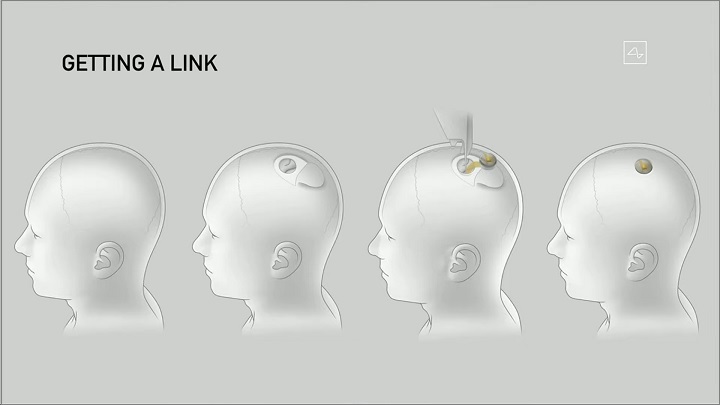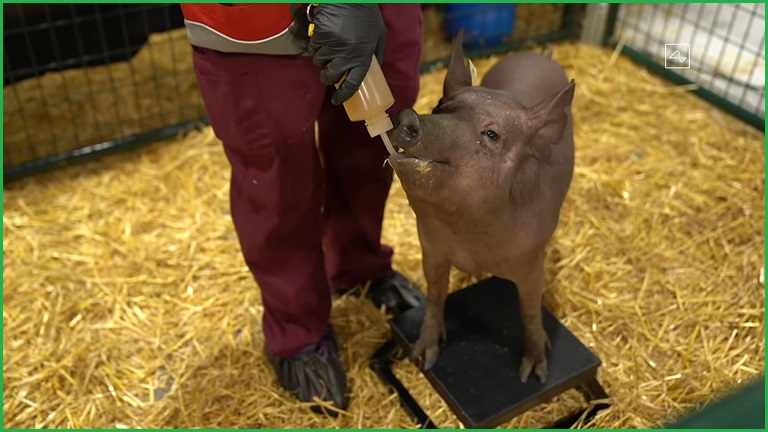Elon Musk’s brain-computer interface company Neuralink has successfully put a prototype device in the brains of pigs.
During a demonstration on Friday, Musk trotted out three of the company’s pigs to show that the experimental device is apparently harmless in mammals.
Musk showed “real-time signals” sourced directly from the Neuralink device implanted in Gertrude the pig.
"This Neuralink connects to neurons that are in her snout so whenever she snuffles around and touches something with her snout, that sends out neural spikes,” Musk said.
The demonstration was the first live example of Neuralink’s device reading brain signals – part of a proof of concept for the company’s ambitious brain-computer interface system.
Musk said the device will be "kind of like a Fitbit in your skull with tiny wires” and that it will have a lot of health monitoring functionality.
It has been more than 12 months since Musk last presented Neuralink.
Aside from saying the device would connect to users’ smart phones by bluetooth, he did not mention the previously stated purpose of using Neuralink to control a phone directly through the brain – which Musk touted as a way of making smartphones accessible to people living with disabilities
The design of the chip implant has also been simplified in the past year, now featuring a single, coin-sized device implanted into the skull which Musk said would be undetectable to an observer.

A robot will cut a small round hole in your skull to implant the device. Source: Neuralink
Implant surgery will be completed by a robot, will take only an hour, and won’t require anaesthetic, according to Musk who believes the device could solve numerous problems by ‘writing’ brain signals through neural stimulation.
“All of your senses, your sight, hearing, feeling, pain, these are all electrical signals sent by neurons to your brain,” Musk said.
“If you can correct these signals, you can solve everything from memory loss, hearing loss, blindness, paralysis, depression, extreme pain, anxiety addiction, strokes, brain damage – these can all be solved with an implantable Neuralink.”
Later in the presentation, Musk venutred further into the realm of speculation.
“In the future I think you will be able to save and replay memories,” he said.
“This is obviously sounding increasingly like a Black Mirror episode but I guess they’re pretty good at predicting.
“Essentially if you have a whole brain interface, everything that’s encoded in memory, you could upload.
“You could basically store your memories as a backup and restore the memories and ultimately you could potentially download them into a new body or a robot body.
"The future’s going to be weird.”
Science fiction
Little in Musk’s Neuralink presentation showed anything near the future capabilities promised by Musk, however, as it was limited to rudimentary readings of brain signals through the device.
While he admitted Friday’s demonstration was largely about recruiting new employees, the billionaire did little to quash speculative excitement about the potential for this next-generation technology.
Musk has seemingly made a career of selling science fiction dreams.
Conceptual telepathy
— Elon Musk (@elonmusk) August 29, 2020
His electric vehicle company Tesla – which has seen an extraordinary share price increase this year – banks on the idea of futuristic fully autonomous electric cars.
Currently Teslas are far from being fully autonomous, despite the ‘self-driving’ feature – more like an advanced cruise control – being named Autopilot.
Many Teslas have been involved in fatal crashes while in Autopilot, and a German court recently found the feature’s name was “misleading”.
Musk is also CEO and founder of commercial spaceflight company SpaceX.
While the company has successfully pioneered rocket reusability and has launched a crewed mission to the International Space Station, it is still a long way off Musk’s stated dream of colonising Mars.










